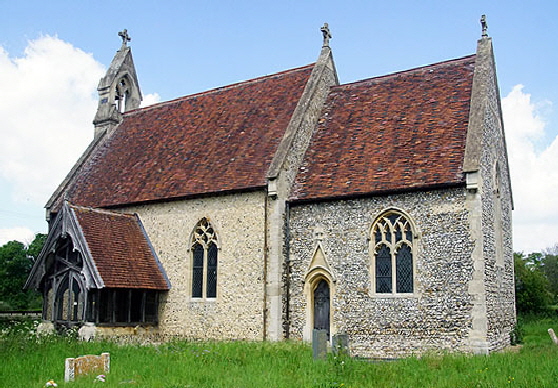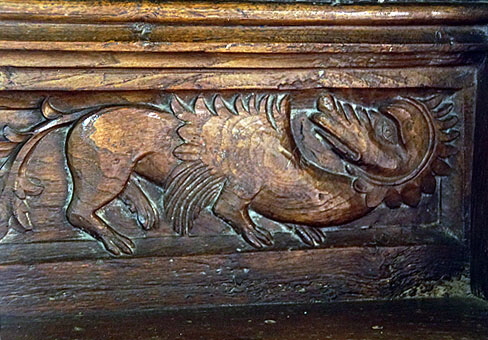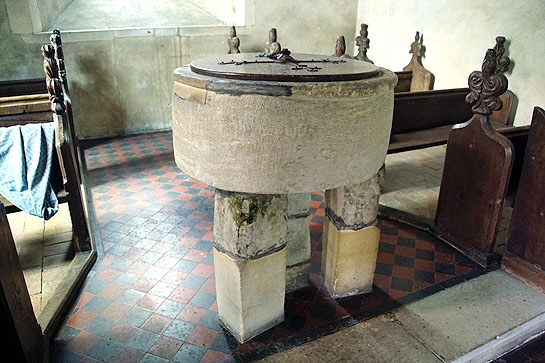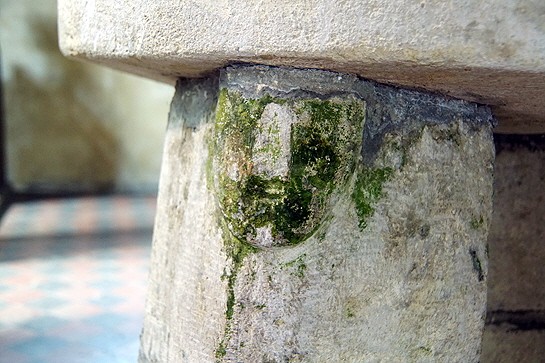|
Alphabetical List |
|
|
|
|
|
|
|
County List and Topics |
|
|
|
Please sign my Guestbook and leave feedback |
|
|
||||||||||||||||||||||
|
The doorway itself is unusual. It is tall and narrow - resembling an Anglo-Saxon doorway in fact - but it is finely executed. Decoration is minimal. One might say that there is a certain self-conscious dignity about it that reflects the quality of the tympanum that adorns it. Just inside the northern jamb. however, the masons have carved a little human. figure in an almost cartoon-like style. Why? For the hell of it, I suppose! It is yet another demonstration of the inscrutability of the minds of mediaeval masons and their patrons. As you look through this south doorway you see the north door immediately in line. Above that is another tympanum carving - on the inside of the doorway! Was it originally on the outside? It has a design that imitates the human carving inside the south door and certainly does not seem to be the work of the man who carved the south tympanum. Can there be a better example of the contrast between two men working at the same time at the same church, one an artist, the other an enthusiastic bodger? The north carving is an odd one that I will discuss later. All this excitement and we’re not even inside yet! The chancel arch too is early Norman. Its simple decoration matches that of the south door and is clearly contemporary, It is not clear whether the entirety of the chancel beyond the arch is Norman. The Victorian stone reredos of blind arcading is faux Norman, of course, but nevertheless in keeping with the character of this little church. The tub font in the nave is Norman and - oddly - supported by three chunks of masonry rather then the usual four making it look a bit like a stone milking stool! Each of these crude pillars has a similarly crude face peeping out. The old benches are of the fourteenth and fifteenth centuries and are adorned by carved animal figures that are so popular in this area. Many are dogs, the epitome of faithfulness. Charming as these are, however, the real delight is that the backs of the benches are themselves decorated and that one of these has what can only be described as a fantastical carved frieze. This is a real work of the carpenter’s art. It is very reminiscent of misericord carvings translated into one continuous composition. There are dragons, a man emerging from a shell and a creature with a bearded human head, The Church Guide suggests is may “represent the danger of the world and the devil outside the safe protection of the church”, Indeed it may. Indeed it may mean just about anything! You are left with the usual inescapable questions. What did this mean? Who decided it should be done? We are left with the usual “no idea really” unless you accept the rather po-faced idea offered in the Church Guide. For my part, I think it is part of the misericord carving tradition: very freelance and very much at the whim of the carpenter. There was major restoration carried out here in 1857 and 1866 by Samel Sanders Teulon - doncha love that name? Apparently the fabric had been in a parlous state for many years. Teulon showed what could be done without ripping the historic heart out of a church, something many of his contemporaries sadly never learned. At the same time, its seems that he was not having his arm twisted to manufacture some sort of Victorian idea of what a church should look like. We should be very grateful. Much credit too belongs to the CCT who took on this redundant church and lavished their own brand of love upon it. |
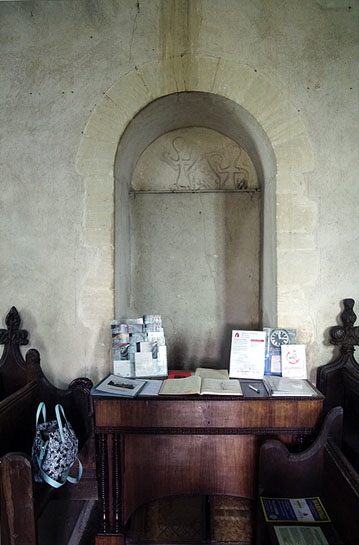 |
|||||
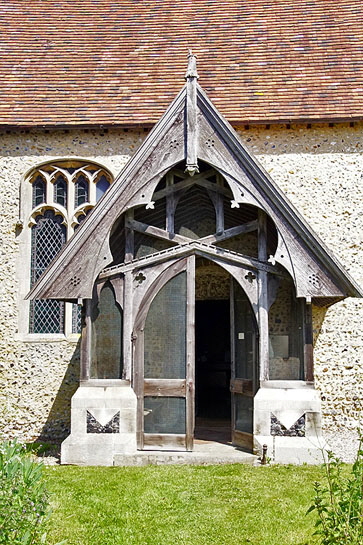 |
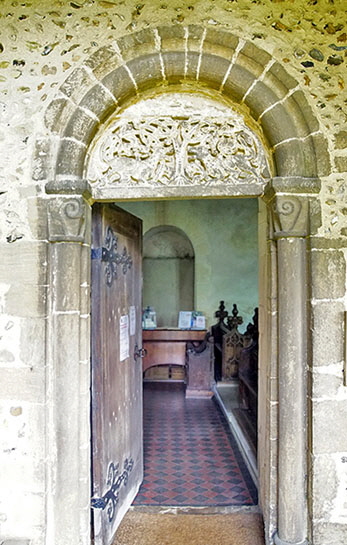 |
||||
|
Left: What a very pretty face this church presents to the world by its charming timber porch. I don’t know how old it is but I suspect that there has been a porch of some sort here for some centuries protecting the relatively unweathered south doorway beyond it. Centre: The simple and dignified south door surmounted by its Norman tympanum. Note the simplicity of the decoration. Right: The strange tympanum over the inside face of the north doorway. Interestingly, Pevsner suggested that its crudeness might point to a re-used Anglo-Saxon stone. |
|||||
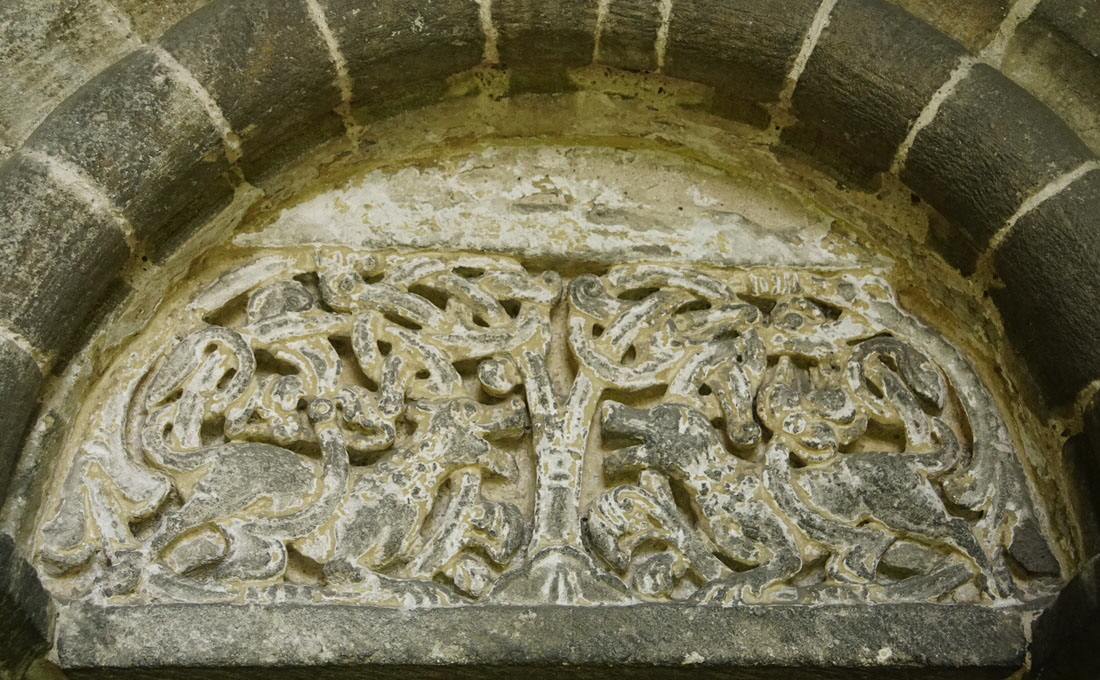 |
|
The magnificent Norman tympanum. A Tree of Life is intertwined “affronted” dogs. The vegetation of the tree seems to grow from their bodies. Note the deep undercutting. None of you scratching out of shallow pictures here, This was the real deal: a work of sculptural art created by a man confident in his own capabilities. |
|||||||||||||||||||||||||||||||||||||||||||
 |
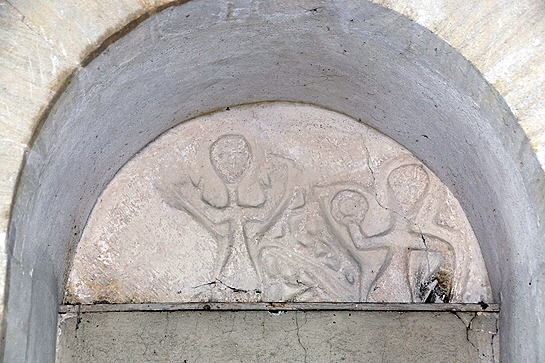 |
||||||||||||||||||||||||||||||||||||||||||
|
Left: The simple outer volute capital conceals the stylised human figure, It seems obvious to me from the exaggerated arms and the way the right arm (as we look at it) blends into the carving’s setting that this is not necessarily down to insufficient skill on the part of the carver. It may be artistic licence. Right: The peculiar north tympanum. The accepted explanation is that it represents Edward the Confessor presenting his ring to a beggar (in the spirit of generosity to the poor so evident in English monarchs down the centuries) who then promptly reveals himself to be St John the Baptist in disguise. Don’t ever think that PR is a modern concept! The similarities of the south door carving to the north tympanum carving have caused some to think they are contemporary. Pevsner thought this tympanum might be Anglo-Saxon and you can readily see what he means. Edward was, after all, an Anglo-Saxon king, So I am going to advance my own theory. Was the tympanum indeed from an earlier church and did the Norman carver of the south doorway carry out a conscious imitation? A nod towards a predecessor? |
|||||||||||||||||||||||||||||||||||||||||||
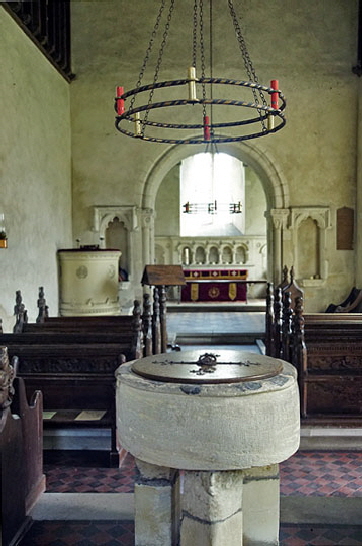 |
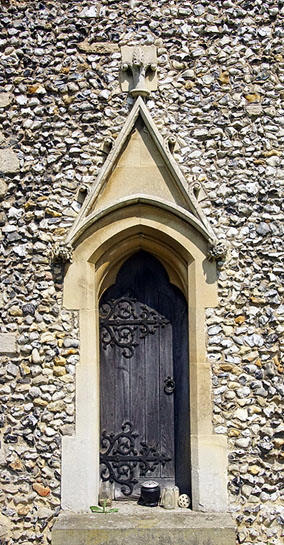 |
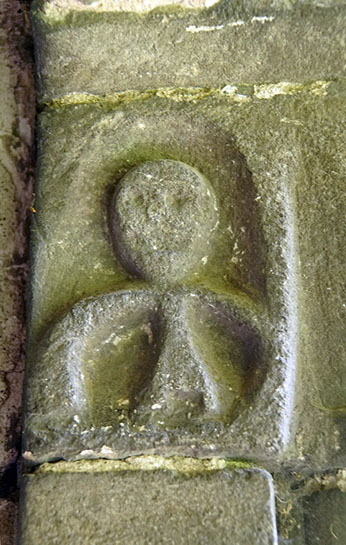 |
|||||||||||||||||||||||||||||||||||||||||
|
Left: The church looking towards the east. The chancel arch and the font - note its peculiar three-legged support structure - are original Norman. The blind arcading behind the altar, however, is Victorian. The empty niches either side of the arch are fourteenth century. Centre: Nobody seems to have put a date to the pretty priest’s door on the south side of the chancel. I suspect it was pretty well rebuilt by Teulon. Right: Close-up of the south door figure. |
|||||||||||||||||||||||||||||||||||||||||||
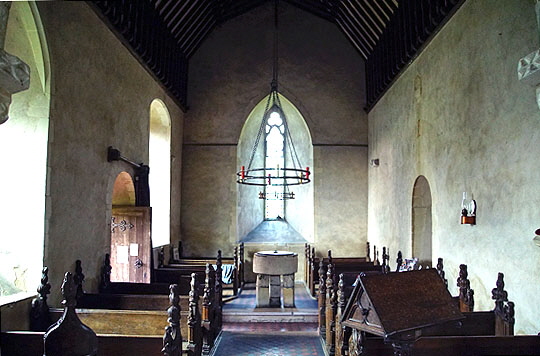 |
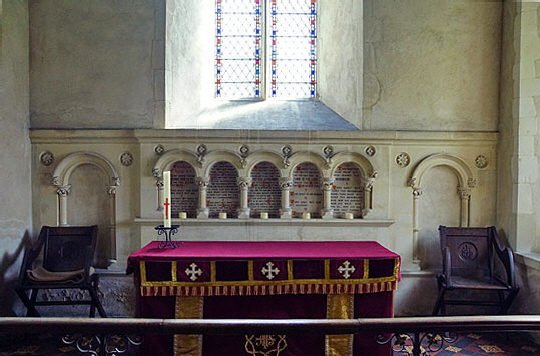 |
||||||||||||||||||||||||||||||||||||||||||
|
Left: Looking towards the west end. The window is a Victorian insertion. Note the poppy heads on the benches on either side. Right: The attractive Victorian reredos. |
|||||||||||||||||||||||||||||||||||||||||||
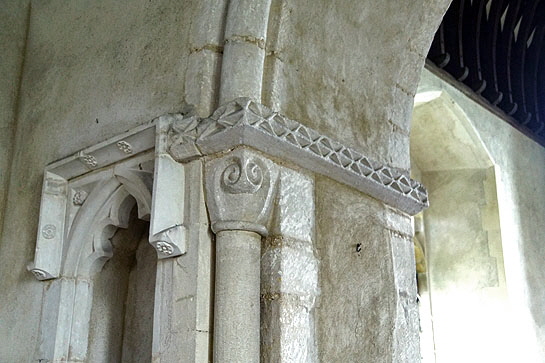 |
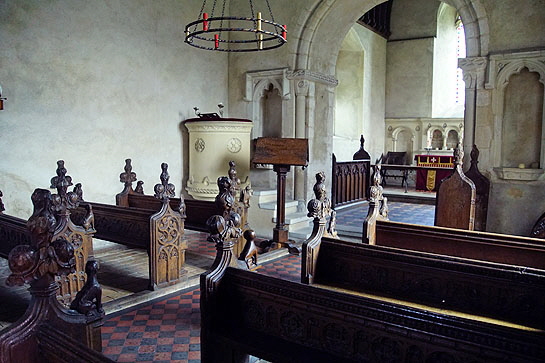 |
||||||||||||||||||||||||||||||||||||||||||
|
Left: The north side of the chancel arch. Compare the volute design with that on the south doorway. Right: Looking north east across the church. |
|||||||||||||||||||||||||||||||||||||||||||
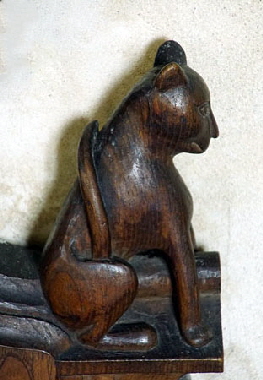 |
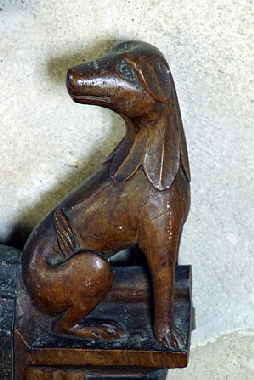 |
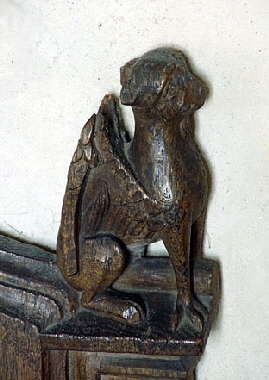 |
|||||||||||||||||||||||||||||||||||||||||
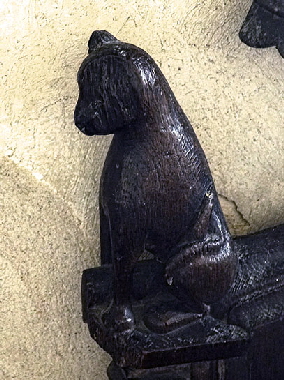 |
|||||||||||||||||||||||||||||||||||||||||||
 |
|||||||||||||||||||||||||||||||||||||||||||
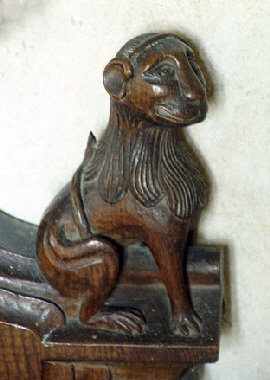 |
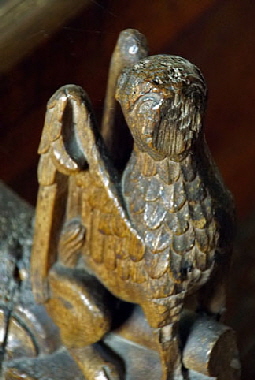 |
||||||||||||||||||||||||||||||||||||||||||
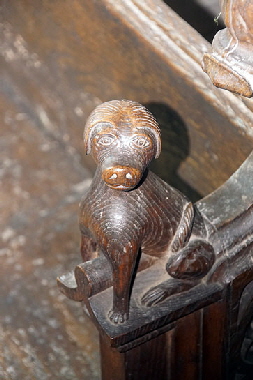 |
|||||||||||||||||||||||||||||||||||||||||||
|
Two Rows Above: Various example of poppy heads on the bench ends. As with many of the churches in this part of Suffolk many of them are quite benign-looking domestic animals, interspersed with a few dragons and griffons. There is little of the ferocity one sees in some other counties. |
|||||||||||||||||||||||||||||||||||||||||||
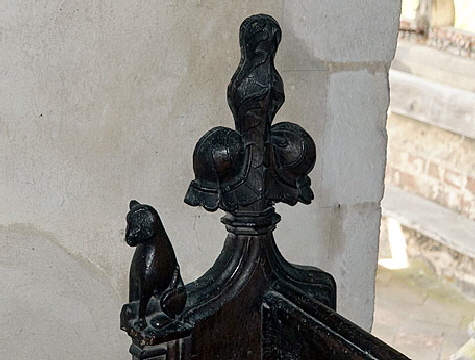 |
|||||||||||||||||||||||||||||||||||||||||||
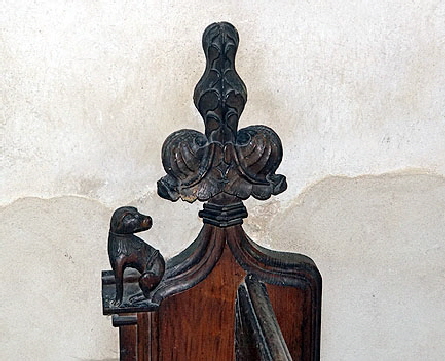 |
|||||||||||||||||||||||||||||||||||||||||||
|
Again as with most benches in this area, the central poppies are stylised decorative carvings. At Wordwell poppies are carved only on one side of the central carving although many churches locally have then carved on both sides. |
|||||||||||||||||||||||||||||||||||||||||||
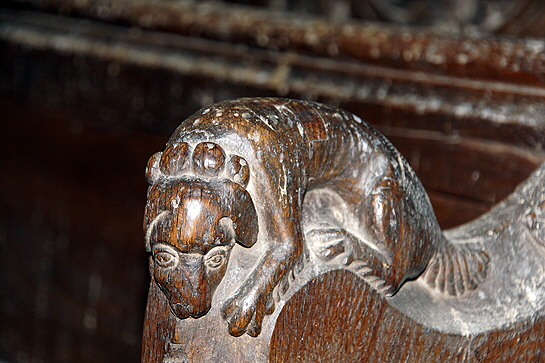 |
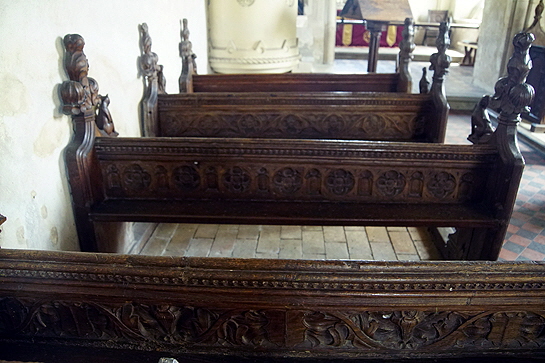 |
||||||||||||||||||||||||||||||||||||||||||
|
Left: Is this a dog? His paws and forelegs don’t look quite right. He is an altogether different species of carving and he is draped over the edge of the edge of a smaller bench. Whether this has always been here or whether it was imported from some other church I don’t know but it is definitely different from the rest. You can see it bottom right of the pictures of poppy heads above. Right: Looking along the benches on the north side. The rear panels are nicely carved with stylised decoration - an unusual feature here. |
|||||||||||||||||||||||||||||||||||||||||||
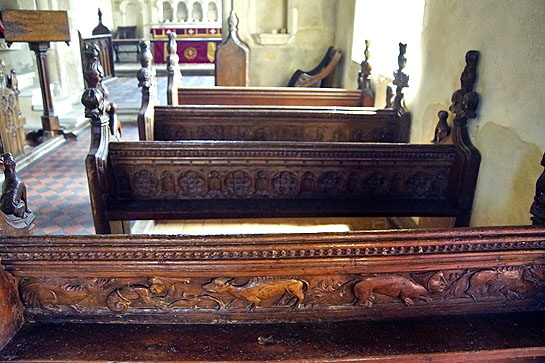 |
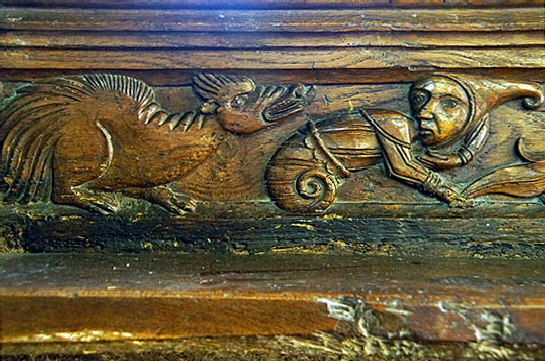 |
||||||||||||||||||||||||||||||||||||||||||
|
Left: The benches of the south side are similarly carved but the westernmost bench nearest to the camera has the beautiful run of misericord-style carving. Right: At the left hand end of the bench back a dragon of some kind has thoroughly disconcerted a creature with a human head, two arms, no legs and a curly tail! |
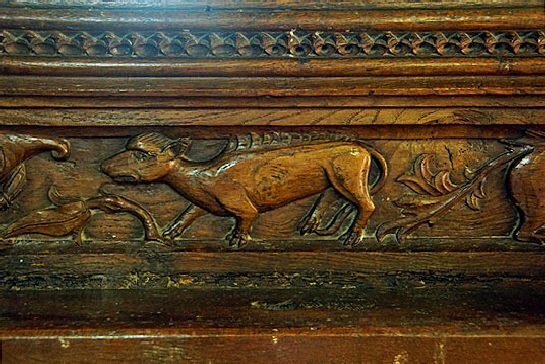 |
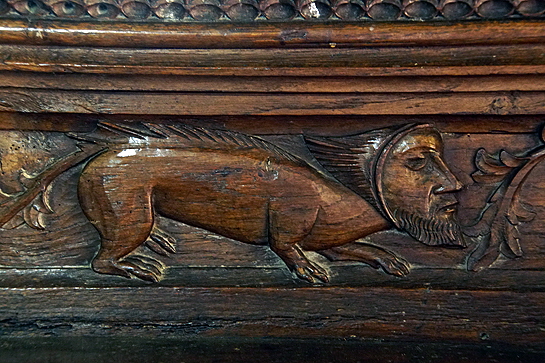 |
||
|
Left: Mr Curly-Tail is also faced with a unidentifiable beast with what look like scaly spine plates and three-toed limbs. Right: Next up is another bearded man-beast this time with a more “conventional” animal body and four legs. |
|
Left: The plain-as-pikestaff Norman font. The supports are an obvious bodge job at least from the knees (!) downwards. Right: You can see clearly that the supports have been attached or re-attached to the font. I am sure there must have been four (or even five) to start with. You can see a crude human face and there is one on each of the three supports. |
 |
|||
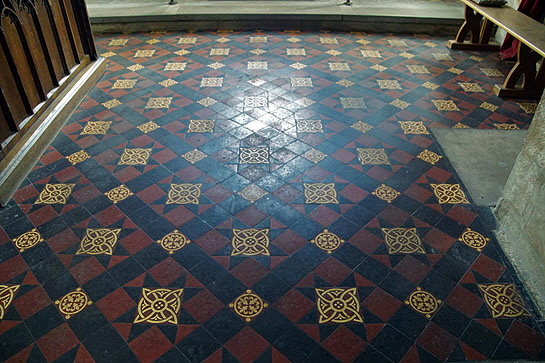 |
|||
|
Left: Curiously, the chancel floor tiles have circle-interlaced-with-arcs designs as discussed in many places on these pages. I am not, however, attributing it on this occasion to neo-Platonist philosophy! If an infinite number of designers do an infinite number of designs one of them is bound to come up with Plato eventually! Right: The north east aspect. Note the faux-Norman surround to the restored east window and also a rather misplaced string course near the gable. |
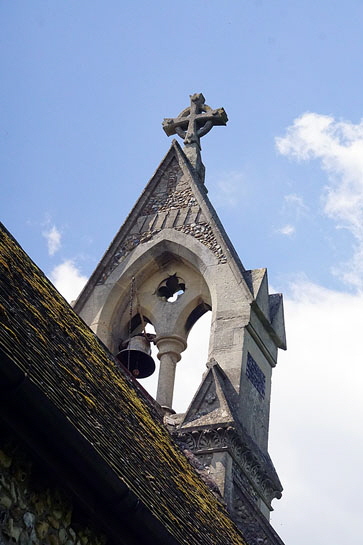 |
|||||
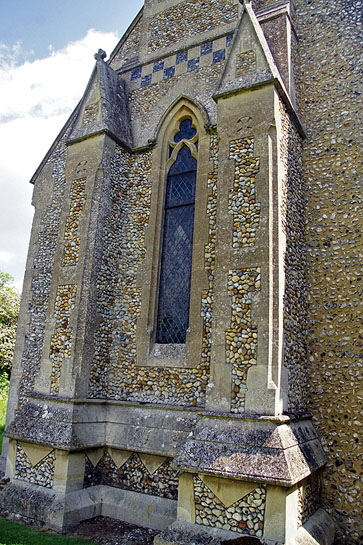 |
|||||
|
Left: The much-restored west end. It is nicely done Teulon (if indeed it was he) must have decided to incorporate some additional elements of vernacular Suffolk architecture. Thus this west end is surprisingly ornate. A very posh version of flint-facing has been used and above the fancy buttresses we can see a bit of good old Suffolk flint flushwork. Further down he has used dressed stone to create pretty patterns. No, it’s not really authentic but it respects local architectural traditions and it has been done tastefully. Bravo, say I! Right: The little bell cote is also Victorian and similarly well-executed and much in the same style as the west end. |
|||||
|
|
|||||
